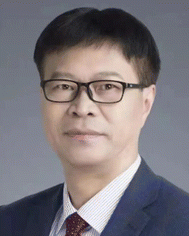Electrochemical frontiers in the nitrogen cycle
Xuping
Sun
*a,
Jieshan
Qiu
b and
Chenghua
Sun
c
aInstitute of Fundamental and Frontier Sciences, University of Electronic Science and Technology of China, Chengdu 610054, Sichuan, China. E-mail: xpsun@uestc.edu.cn
bCollege of Chemical Engineering, State Key Lab of Chemical Resource Engineering, Beijing University of Chemical Technology, Beijing 100029, China
cDepartment of Chemistry and Biotechnology, Swinburne University of Technology, Hawthorn, VIC 3122, Australia
The essence of nitrogen-cycle electrocatalysis lies not only in the practical applications for ammonia (NH3) synthesis or environmental remediation but also in its profound scientific underpinnings. This realm offers a unique lens through which to scrutinize the intricate interplay between chemical transformations and the natural world. At its core, it holds the promise of unlocking secrets about Earth's past, present, and future.
Understanding the nitrogen cycle has implications far beyond immediate technological advancements. It is a gateway to comprehending the historical evolution of our planet. Exploring the role of iron sulfides and their catalytic abilities provides a fascinating perspective on the chemical processes that might have spurred life's origins. The link between iron, sulfur, and nitrogen speciation over geological timescales offers insights into how Earth's conditions might have shaped and influenced these vital elements.
Moreover, the pursuit of sustainable NH3 synthesis serves as a testament to humanity's quest for energy efficiency and environmental responsibility. The traditional Haber–Bosch process, while revolutionizing agriculture and sustaining human life, has left a considerable carbon footprint. Electrocatalysis, by contrast, presents an avenue towards greener and more energy-efficient alternatives. Its potential to harness renewable energy sources and convert them into valuable chemicals like NH3 speaks volumes about our aspirations for a sustainable future.
Within this realm, challenges persist. The delicate balance between achieving high yields of NH3 and suppressing competing reactions such as the hydrogen evolution reaction (HER) requires meticulous engineering of catalysts. The ongoing efforts to design catalysts with specific structural features, be it oxygen vacancies, tailored coordination environments, or precise doping strategies, underscore the intricate dance between materials science and catalysis.
To delve deeper into this transformative narrative, let's explore the intricate fabric woven by various pioneering studies:
Navigated by Rosalie K. Hocking and co-workers (https://doi.org/10.1039/D3QI01553J), the exploration of iron sulfides’ role in nitrogen species’ reactions sheds light on their catalytic and direct reductant capabilities, offering insights into Earth's historical nitrogen transformations. Sadeeq Ullah and co-workers (https://doi.org/10.1039/D3QI01536J) discussed the challenges in electrochemical nitrate (NO3−) reduction for NH3 synthesis, highlighting strategies like oxygen vacancy incorporation in catalysts to enhance efficiency and selectivity. Zhong-Yong Yuan and co-workers (https://doi.org/10.1039/D3QI01113E) focused on first-row transition metal-based catalysts for NO3−/NO2− reduction, emphasizing the potential of Cu-, Fe-, Co-, Ni-, and Ti-based electrocatalysts for efficient NH3 production. Wenda Chen and co-workers (https://doi.org/10.1039/D3QI00732D) detailed the suitability of Ti-based nanomaterials, especially Ti-based metallic and TiO2 nanomaterials, for NO3− reduction, highlighting recent advancements and future challenges. Dongpeng Yan and co-workers (https://doi.org/10.1039/D3QI00683B) reviewed progress in photoelectrocatalytic NH3 synthesis, emphasizing strategies like vacancy engineering and heterojunction construction for better NH3 synthesis mechanisms. Hao Li, Fei Wang, and co-workers (https://doi.org/10.1039/D3QI00148B) explored the potential of thermal reduction in NO3−/NO2− reduction for water treatment, discussing catalyst synthesis, product selectivity, and the viability of forming NH3. Luchao Yue, Xuping Sun, and co-workers (https://doi.org/10.1039/D3QI00554B) detailed the electrochemical NO3− reduction progress, exploring diverse catalysts like noble-metal-based materials and transition-metal-based catalysts, emphasizing strategies for high efficiency. Debabrata Chatterjee and co-workers (https://doi.org/10.1039/D3QI00199G) explored the role of Ru(edta) complexes in nitrogen cycle electrochemical transformations, elucidating their mechanistic impact in nitrogen fixation and denitrification. Hongda Li and co-workers (https://doi.org/10.1039/D3QI00895A) introduced a novel bionic FeV-cofactor system for photocatalytic N2 reduction, demonstrating enhanced NH3 yield through Fe-doped BiVO4 decorated with 2D black phosphorus. Ji Zhang and co-workers (https://doi.org/10.1039/D3QI00517H) presented the theoretical design of dual metal catalysts for N2 reduction, offering insights into their efficiency, selectivity, and suppression of the HER during N2 reduction. Aijun Du and co-workers (https://doi.org/10.1039/D3QI00798G) investigated Fe-alloyed bimetallics for electrochemical N2 reduction, unveiling their enhanced activity and low HER compared to pristine group-IVA elements. Jianping Yang and co-workers (https://doi.org/10.1039/D3QI00793F) explored self-supported Fe/support catalysts synthesized through hydrothermal and thermal reduction strategies, showcasing their improved performance in electrochemical NO3− reduction. Yi Feng and co-workers (https://doi.org/10.1039/D3QI00795B) demonstrated NiFe LDH nanoarrays on Co3O4 nanosheets for superior NO2− reduction and oxygen evolution, showcasing high efficiency and stability in NH3 electrosynthesis. Jinmeng Cai, Siyu Lu, and co-workers (https://doi.org/10.1039/D3QI00865G) discussed spin density modulation using carbon dot materials to enhance Co3O4's electrocatalytic NO3− reduction, resulting in increased NH4+ faradaic efficiency and stability. Fengling Zhou and Chenghua Sun (https://doi.org/10.1039/D3QI00568B) investigated the high activity of electrodeposited Ni/Ru hydroxide hybrids for NO3− to NH3 conversion, unveiling the role of surface-oxidized nickel layers in catalytic enhancement. Ke Chu and co-workers (https://doi.org/10.1039/D3QI00268C) unveiled Sb2S3's role as a catalyst in efficient NO-to-NH3 conversion, highlighting the unique functionality of SbAIU sites for high selectivity and activity. Yuting Sun and coworkers (https://doi.org/10.1039/D3QI00225J) proposed the β-PdBi2 monolayer as a highly efficient catalyst for electrochemical NO reduction to NH3, emphasizing its low limiting potential and high efficiency. Longcheng Zhang and co-workers (https://doi.org/10.1039/D3QI00209H) detailed the high efficiency of a RuO2 nanoparticle-decorated TiO2 nanobelt array in synthesizing NO3− from NO, showcasing a significant yield and electrochemical insights. Guohui Wang and co-workers (https://doi.org/10.1039/D2QI02757G) introduced La-doped VS2−x for electrochemical NO3− reduction to NH3, highlighting its high selectivity and efficiency, which are promising for NH3 synthesis. Xiaoya Fan and co-workers (https://doi.org/10.1039/D2QI02409H) demonstrated the efficacy of Ag@TiO2 in the electrosynthesis of NH3 from NO2−, emphasizing its high yield and efficiency, and indicating its potential in wastewater treatment.
These pioneering studies underscore a collective dedication to unravelling the intricacies of nitrogen-cycle electrocatalysis, steering the course toward sustainable NH3 synthesis. The amalgamation of diverse catalysts, electrochemical pathways, and novel materials not only holds promise for mitigating environmental burdens, but also heralds a new era of sustainable nitrogen transformations, underscoring humanity's commitment to a greener future.
| This journal is © the Partner Organisations 2024 |



